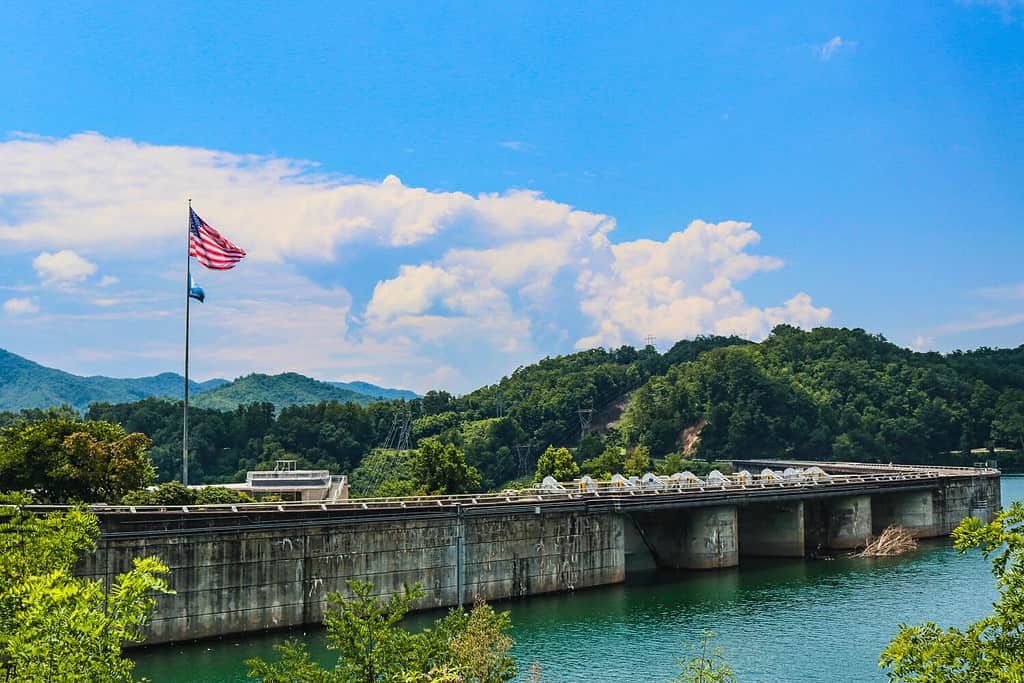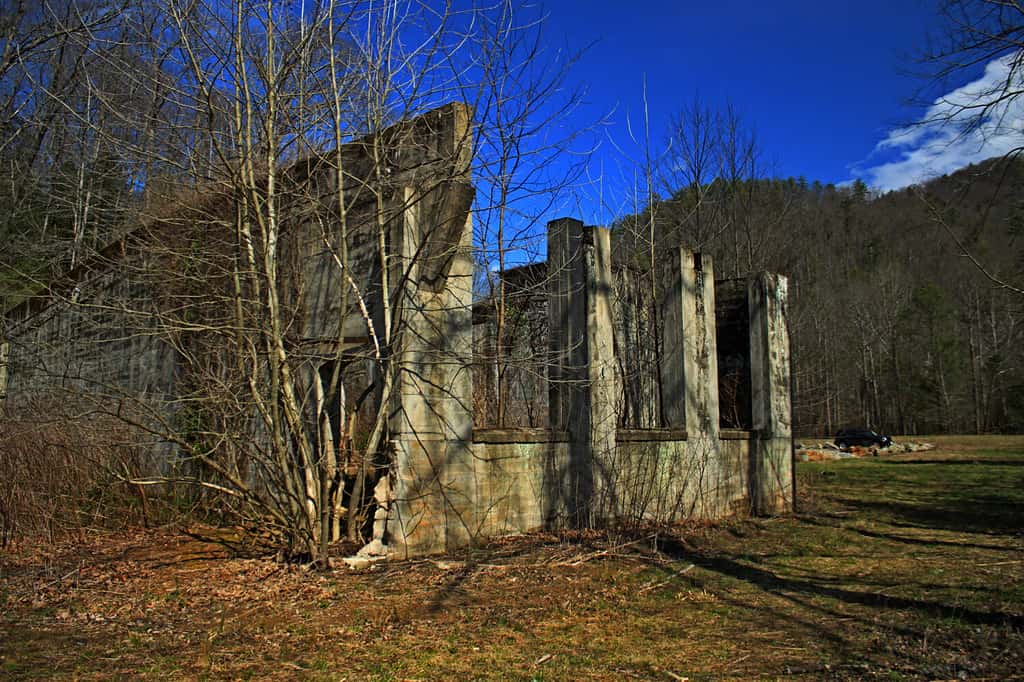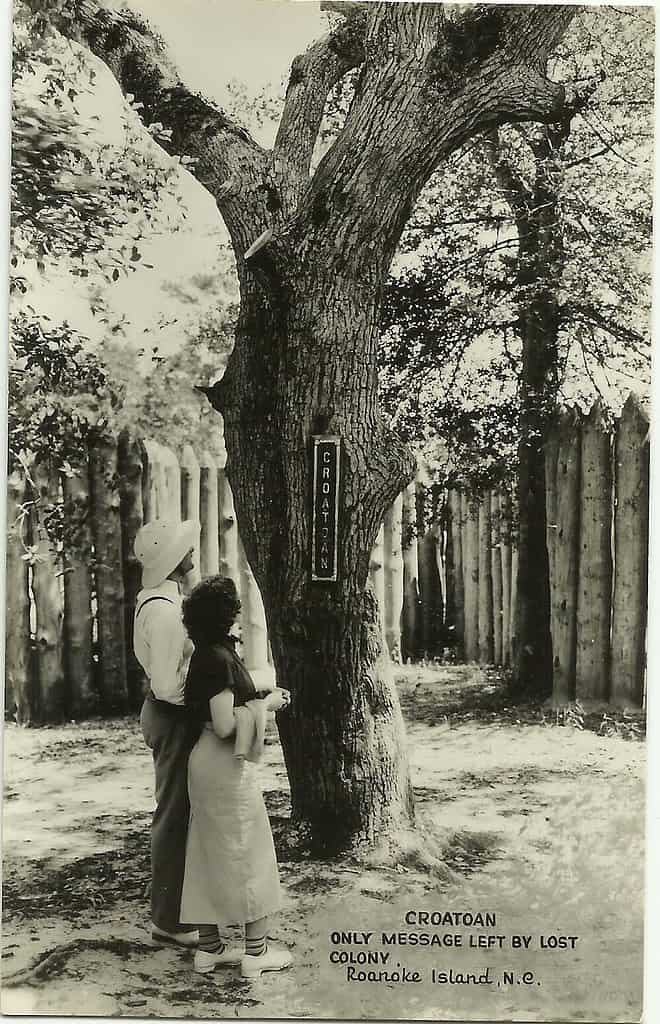Introduction
Ghost towns have been the fascination of tourists across the United States for decades. Whether ghost towns were once the site of battles, old industrial centers, ports, or colonies, they continue to remind us of where we came from. Their apocalyptic feel also points to the future, where any bustling city can become abandoned and lost to history. While we may be in awe over the eerie, mysterious atmosphere that these ghost towns emit, we rarely wonder whether our own homes might become the artifacts of ghost towns one day. Although we can’t predict the future, it’s interesting to investigate the past. Discover the histories of four ghost towns in North Carolina and find out why they seemed to vanish.
Brunswick Town and Fort Anderson

© https://ift.tt/T1UyZnl – License
Brunswick Town in North Carolina has a fascinating history. Founded in 1726 by Maurice Moore, the site began as a port town. Maurice Moore was the son of James Moore, who acted as the governor of South Carolina from 1700 to 1703. During this period, North Carolina belonged to England as one of the original colonies. The name “Brunswick” derives from King George I of England, who had been Germany’s duke of Brunswick.
Brunswick became a large shipping port engaged in trade, exporting goods like tar, turpentine, and pitch. England utilized these goods to create wooden sailing ships that were essential to the Royal Navy. One interesting fact about Brunswick is that it acted as the capital of the North Carolina colony. Brunswick became England’s ideal location for collecting taxes and shipping costs from merchants.
Eventually, Brunswick lost its power and popularity. Political centers and officials began moving to other areas, and Wilmington, North Carolina became a more attractive city, leaving Brunswick behind. By the start of the Revolutionary War, Brunswick’s population had dwindled significantly. In 1842, Brunswick had been absorbed to become part of the Orton Plantation. All that was left of the town was rubble and open land.
Fort Anderson
However, Brunswick was revisited in 1861 when Confederate troops built Fort Anderson in the town as a means of protecting the city of Wilmington. The Cape Fear, which sits just southeast of Brunswick, was used by the Confederacy during the Civil War for the transport of goods and supplies from Wilmington to other areas. Therefore, the Confederacy determined to protect both Wilmington and Cape Fear by finding a solid middle ground, which was Brunswick.
While the Confederacy originally named the site Fort St. Philip’s, the name eventually changed to Fort Anderson. In February of 1865, Union troops staged an attack on Fort Anderson. Three days following the start of the attack, Confederate soldiers fled. Unaware that the Confederates had fled, Union troops continued to barrage the fort. Meanwhile, some Union soldiers had begun climbing Fort Anderson’s walls.
Union troops were unknowingly firing at their own soldiers. Soldiers within the fort attempted to halt the fire by waving blankets and sheets. Eventually, the Union troops on the outside became aware of what had happened. Once the misunderstanding had been sorted out, the Union made their next move. They occupied Wilmington, North Carolina on February 22, 1865.
Although Brunswick remains a ghost town, its serves as a historical reminder of the earliest colonial struggles and of the intricate events of the Civil War. During the 1950s and 1960s, archeologists began to uncover Brunswick ruins. St. Philip’s Anglican Church and Russellborough, which was a house belonging to a sea captain, were brought to light. Tourists of North Carolina can now visit Brunswick and see structures and artifacts that history left behind.
Judson

©Melissa Rhnae Traub/Shutterstock.com
Judson, North Carolina was located in Swain County until its disappearance. The town was small, housing around 600 people, and it had a quaint, folky atmosphere, as it was nestled within the mountains. Judson featured all the necessary elements of a small town, including small businesses, a sawmill, an elementary school, and a post depot. The peaceful Tennessee River wound its way throughout the town until the early 1940s.
During World War II, the demand for electricity increased, leading to the creation of Fontana Dam. Fontana Dam is the highest dam in the eastern United States, and it created the electricity necessary for many residents in and around Swain County. However, its construction resulted in negative effects on the citizens of Judson. The people of Judson were displaced and forced to relocate, as Fontana’s reservoir engulfed their homes and businesses.
Now, the ghost town of Judson lies just below the surface, literally, of Fontana Lake. Judson remains as an underwater ghost town, and it seems to haunt its visitors. When water levels at Fontana Lake are low, visitors can see the remains of Judson peeking out of the water. Visitors have described it as strange and eerie. When Judson peeks out of Fontana Lake one to three times a year, it reminds visitors that it’s still there, that its presence has almost been lost to history.
Mortimer

©James Robert Smith/Shutterstock.com
The establishment of Mortimer, North Carolina was framed as an effort to house workers for Ritter Lumber Company. In 1904, Ritter Lumber Company bought land in and around Mortimer for the harvesting of timber. Around 800 people lived in Mortimer, and most residents worked for the local sawmill and textile mill. The town included a hotel, school, church, blacksmith’s shop, and company store. By 1906, Mortimer seemed to be thriving, and it was rumored that President Theodore Roosevelt had once visited the quaint town.
In 1916, a fire broke out followed by a flood. The two events destroyed much of Mortimer and the surrounding area. Ritter Lumber Company determined that Mortimer was no longer a viable area to continue timber harvesting. Gradually, the company began moving out of Mortimer. A year after the devastating fire and flood had occurred, the Ritter Lumber Company had abandoned Mortimer completely.
In 1922, a cotton mill opened in Mortimer that helped to reestablish the town. By 1933, the Civilian Conservation Corps had repaired many of the structures and buildings damaged by the fire and flooding in 1916. Mortimer continued to expand steadily until 1940 when a coastal hurricane resulted in the flooding of nearby Wilson Creek. The waters grew to heights measuring 94 feet, which resulted in the relocation of most Mortimer residents.
The railroad that ran through Mortimer was removed and melted down during World War II to use for necessary supplies. This action, coupled with the departure of the Civilian Conservation Corps, removed any opportunity for tourism or new residency. Now, Mortimer is a kind of semi-ghost town that supports only 16 families.
Roanoke Colony

©https://ift.tt/zodqmit – License
Roanoke Colony is likely one of the most well-known ghost towns in the United States due to its unconventional and shocking history. While Roanoke Colony was originally established within the boundaries of colonial Virginia, the site, Roanoke Island, lies in present-day North Carolina.
Many people attribute the first settlement of America to Jamestown, Virginia, but Roanoke Colony was England’s first colony in North America. Unfortunately, the colony is not recognized as the first settlement because it disappeared without a trace following its founding.
Queen Elizabeth I of England allowed Sir Walter Raleigh to establish the first English colony in the Americas. In 1584, the Amadas-Barlowe Expedition sought to find a suitable place for the first colony. The plan was a success, as the leaders of the expedition made contact with Native Americans on Roanoke Island. Native American and English relations around Roanoke Island remained friendly, and trade between the two parties made Roanoke Island attractive to the English crown.
In 1585, Richard Grenville sailed to North America with several colonists. One of these travelers was John White, who was an artist and a cartographer. White mapped out the region and painted certain aspects of Roanoke Island, including the colony, people groups, and wildlife. White’s work is one of the only surviving descriptions of Roanoke Colony. Meanwhile, Grenville left the founding of the colony to Ralph Lane. Lane communicated with the Native Americans, who helped the settlers to find gold and copper within the region.
Trouble with Native Americans
Unfortunately for the settlers of Roanoke Colony, relations with Native Americans did not remain amiable by spring. Furthermore, colonists were struggling to find and grow food. Native Americans did not want to continue enabling the settlers. By June, Lane discovered that the Native Americans were planning to attack Roanoke Colony. To avoid the deaths of the colonists, Lane planned a raid on the Native Americans, which led to the death of their chief, Chief Wingina.
Disappearance
When Grenville returned to Roanoke Colony, he discovered that Lane and the settlers had sailed back to England on another ship. Grenville left 15 men with two years of supplies at Roanoke because he did not want the colony to become completely abandoned. The men would hold down the fort until new colonists came to settle the area. However, these men mysteriously disappeared before the new colonists arrived.
In 1587, Sir Walter Raleigh determined to start over at Roanoke Colony. John White and 117 other colonists were to begin anew on Roanoke Island. The colonists could not create peaceful relations with the Native Americans on Roanoke Island because the Native Americans were still outraged over Ralph Lane’s murder of Chief Wingina. Six days after the colonists arrived, one settler named George Howe was killed by the Native Americans.
By August, supplies were running low. Colonists urged White to travel back to England to receive supplies to transport to Roanoke Colony. In April of 1588, White traveled back to Roanoke Colony with supplies. Unfortunately, White’s ships ran into conflict with the Spanish Armada. White’s efforts were delayed, and he returned to Roanoke in August of 1590.
Croatoan
When White arrived, no trace of the Roanoke colonists was found. Only one clue had been left for White. Someone had carved the word “Croatoan” into a tree trunk on the island. This suggested that the colonists had moved to the nearby island of Croatoan. White was unable to travel to Croatoan and find the colonists because storms halted his journey, resulting in his return to England. Unfortunately for White, his family had been left behind at Roanoke Colony during his trip back to England for supplies. White would never be able to reunite with them.
Roanoke has since been deemed the “Lost Colony.” To this day, no one knows what happened to the colonists at Roanoke. Some believe that they moved to Croatoan to escape the Native Americans. Others think that the Native Americans killed all the colonists before they could find safety, as a way of avenging the death of Chief Wingina. While the fate of Roanoke Colony remains a mystery, many speculate that its failure inspired other expeditions in the Americas, including the search of El Dorado by the exasperated Sir Walter Raleigh.
The post Discover the Eerie Past Of These 4 Ghost Towns in North Carolina appeared first on AZ Animals.
from Animal News, Facts, Rankings, and More! - AZ Animals https://ift.tt/okl7I0B